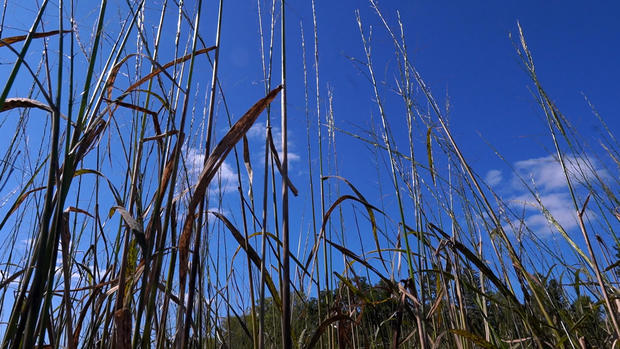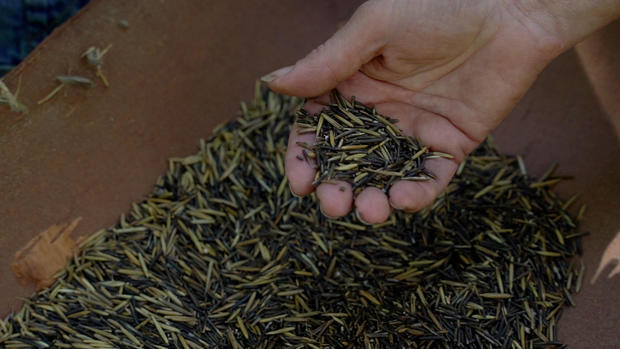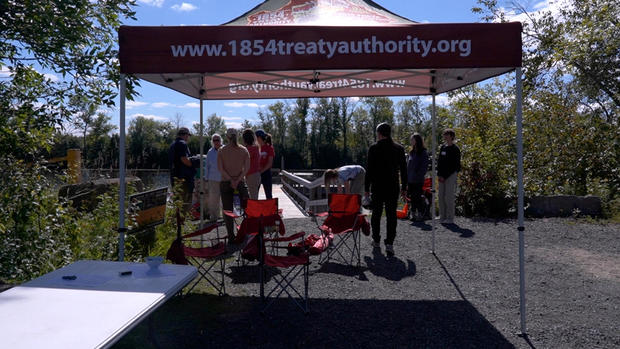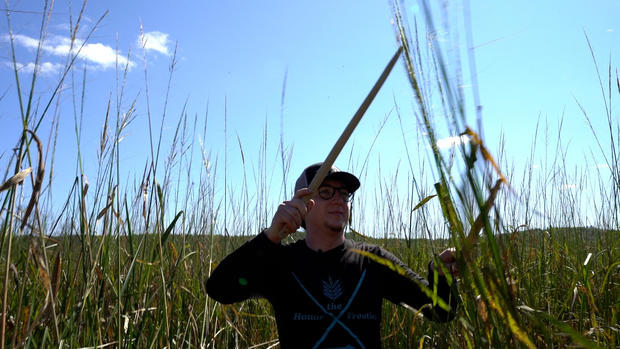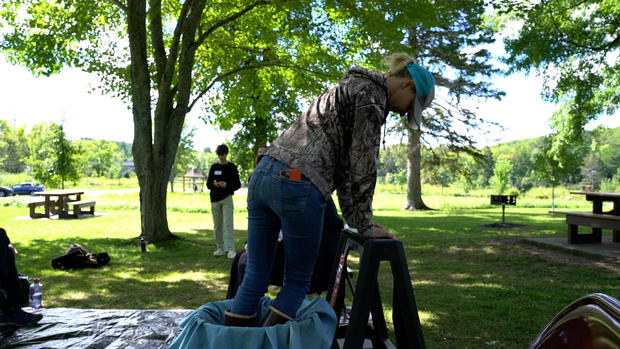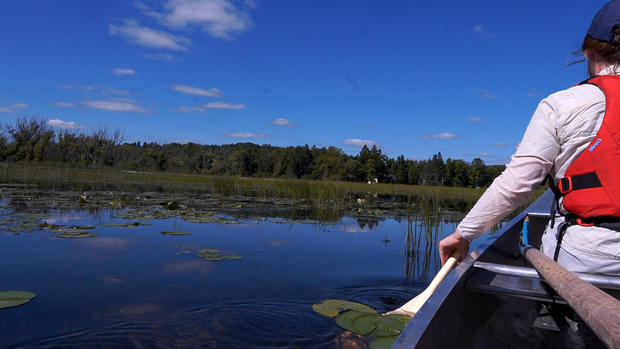State of Water: Protecting and understanding wild rice, sacred to Ojibwe people
MINNEAPOLIS — Wild rice — or Manoomin as the Ojibwe call it — is one of the Midwest's most sacred plants.
But extreme weather, from record snow to destructive floods, is having tangible consequences on our state's water cycle and puts native vegetation at risk.
Researchers and tribal nations are creating partnerships to protect and better understand the needs of Manoomin. While these partnerships work to heal habitats, they also attempt to recenter Indigenous knowledge, slowly tending to deep cultural wounds.
Historians say the Anishinaabe people arrived in Minnesota in the early 1400s after making a great migration from the east. According to Ojibwe storytelling, it was here a vision told them to find their home in a place "where the food floats on water."
The Ojibwe recognized this as Manoomin, found growing near Lake Superior, where they eventually settled.
For centuries, the Ojibwe nurtured and relied on the plentiful grain to sustain them through the seasons. Now, Minnesota has more wild rice than any other state in the country, and it can be found in more than 2,000 of our lakes and rivers.
But scientists know its abundance is ever-changing.
Forging partnerships
Madeline Nyblade is an earth and environmental science researcher at the University of Minnesota. She's a fifth-year Ph.D. student studying the hydrological impacts of climate and land-use change on wild rice.
"Manoomin is facing a lot of threats and one of those is from climate change, and so it's important to think about what we can do to support its resilience and growth across these ecosystems," she explained.
For years Madeline has worked under a tribal–university partnership called the Kawe Gidaa-naanaagadawendaamin Manoomin Research Collaborative. That's Ojibwe for "We must first consider wild rice."
STATE OF WATER: PFAS in Minnesota: How "forever chemicals" changed the state of water
The collective was formed in response to the growing concern over declining wild rice harvests across the Midwest. The group makes it clear to separate itself from the wild rice breeding and genetics research program within the university's agriculture department, which is a historically controversial use of science on a culturally significant plant.
As part of their mission statement the collaborative promises to center tribal consultation and consent at every step. A key priority of the program is to help the public understand and respect indigenous nations within the scientific practice.
Tribal members like Bazile Panek, of the Red Cliff Band of Lake Superior Ojibwe, serve as an independent Indigenous consultant for this wild rice collaborative. He works alongside Nyblade and her team to help answer big questions surrounding wild rice and species decline.
"My part in this collaborative is to help share that data with the tribal members and tribal resource managers to help them fully understand Manoomin or wild rice," said Panek. "Offering those perspectives as well and melding the two together is a really important part of our studies."
Through its research, the collaborative has narrowed down specific trends and areas of concern. According to recent data, our warming winters are causing negative impacts on wild rice output. The lack of snow and ice duration makes it difficult for the seeds to germinate.
"We're also seeing changing precipitation patterns impacting wild rice. Wild rice is really vulnerable in its early life stages, such as the floating leaf stage, when it's a plant that's leaf is resting on the top of the water level. When there's a lot of rain during that time, it can drown out the plants. Or if there's a big flood, it can uproot the plants and cause them to die," says Nyblade.
This environmental impact, coupled with centuries of colonized land use, has disrupted important Manoomin habitats.
"This landscape has been radically transformed by settlers, we've drained wetlands and through ditching tile drains we've dammed areas, we've transformed wetlands into agricultural lands, we've deforested, so there's a ton of environmental change," said Nyblade.
The tribal nations work in conjunction with researchers sharing their own scientific data and providing traditional indigenous knowledge. They use the wisdom of tribal elders to fill in gaps where science may come up empty.
"The elders and the youth, though they may not have fancy degrees or letters behind their name, they do deserve to be recognized for their knowledge that they carry about wild rice," said Panek.
"Working with tribal nations has fundamentally changed how we do research," said Nyblade. "The number one thing that I see is the importance of partnerships and relationship building."
To help build those connections, the collaboration joins other conservation leaders from around the Midwest at Indigenous rice camps. That includes the 1854 Treaty Authority, an inter-tribal organization that protects off-reservation hunting, fishing, and gathering rights in the lands ceded to the federal government.
The ritual allows them to share information, ask questions – and more importantly – engage in a traditional harvest.
"A lot of researchers or people that work with wild rice or lakes they sometimes don't — haven't even been out wild-ricing. So, it's you know, better be able to do that work if you're studying it and creating these different management plans," said Panek.
But before attendees can begin processing the wild rice, they must first pick it.
To protect Manoomin, Minnesota has outlawed harvesting before it's fully ripened. This is known as its green seed stage. Once the rice has matured, pickers can apply for a state permit to harvest.
MORE: What's happened since the Line 3 pipeline started operating in northern Minnesota
If a lake, wetland, or Manoomin habitat has a particularly poor season the year prior or if a major weather event damages the crop, the DNR and tribal nations will often restrict harvesting or prohibit it altogether, allowing the crop the time to rebound.
David Grandmaison is a wild rice and habitat coordinator for the Wisconsin Department of Natural Resources. He's one of many state employees and educators working with the collaborative to save and protect the Manoomin through water management.
"Part of what we're doing from the aspect of climate change resiliency is to build up that seed bank so that when there are cycles of low productive years, the rice can rest and when conditions improve or become suitable, the rice can wake back up," says Grandmaison.
Harvesting wild rice
To harvest like the Ojibwe requires patience and fortitude. It also requires a flat-bottom canoe, something called flails, a push pole, and a partner.
The push pole is used to move through dense wetlands as wild rice habitats can be tricky to navigate. These are traditionally forked to protect the plants' root systems. Canoes were also chosen to minimize harm.
Once mature Manoomin stalks are located, harvesters use the two flails, or sticks, to knock seeds into the canoe. The seeds pile up on the floor and during a good season they'll often fill the entire boat.
Once back on land, seeds are spread out on a clean surface to dry, and impurities are discarded by hand.
Next, the crop is poured into a vessel where it will be parched in a kettle over a wood fire. Parching reduces the amount of moisture in the grain so it can be preserved and loosens the hull from the grain.
Harvesters then place the grain in a bucket where they gently knead it or dance on it with their feet. This is known as hulling, and it removes the outer casing from the rice kernel.
Finally, the rice is placed into baskets for winnowing. This is where the grains will be continuously tossed into the wind until the shell finally separates, leaving only shiny black grains of rice behind.
It's a labor-intensive practice that yields big rewards.
"We've been sort of transforming the way that we do restoration by not only doing the physical seeding and monitoring and vegetation management and that kind of thing, but also engaging with the community," said Grandmaison.
While rice camps and other conservation programs are helping bridge cultural gaps and share valuable information, other action is still necessary to stop further species decline.
"If we see wild rice continue to decline, we know it will have a big negative effect on the species. The ducks, the waterfowl that depend on it and many other beings as well as it indicates that our water systems are declining and really changing in ways that isn't sustainable for the future," said Nyblade.
How to help protect wild rice
Like many conservation efforts, the first steps often begin in your own backyard.
If you live near or on a native shoreline, protecting those diverse ecosystems is the top priority.
The message is simple: if Manoomin grows on your property, leave it be, limit boat traffic and soil disruption, and if you are able, cut back competing vegetation to give them room to grow.
STATE OF WATER: How suburban home aesthetics are scarring Minnesota shorelines
As always, limit pollutants and runoff from your lawn to keep waterways clean.
Education also plays a key role in advocating for Manoomin. It is important to understand tribal sovereignty and the sacred relationship between wild rice and your local tribes.
"We do regard Manoomin as our relative and as a gift that was given to us by the creator and the manidoo, or the spirits. So, in that gift we have responsibility to act and reciprocity with this being," said Panek.
This includes respecting tribal land and property, only harvesting in state and tribal-approved locations and learning how to pick and process Manoomin sustainably.
The state is also finding unique ways to help combat the effects of climate change on Manoomin and its waterways. This includes utilizing our often-controversial dam systems to help regulate water levels.
The Minnesota Department of Natural Resources is also continuing to remove invasive species, such as Asian carp, which may cause harm to Manoomin habitats.
And more recently, conservationists and scientists have been pushing for higher restrictions around sulfate mining pollution. Their hope is that with more resources and awareness around wild rice, we can preserve this Minnesota treasure.
"People should really be tuned in to what's happening with wild rice," said Grandmaison. "There's information stored out here that we need to pay attention to because it's going to help us to identify where we're failing as a culture in terms of our environmental stewardship. But it will also help to inspire us to succeed."
